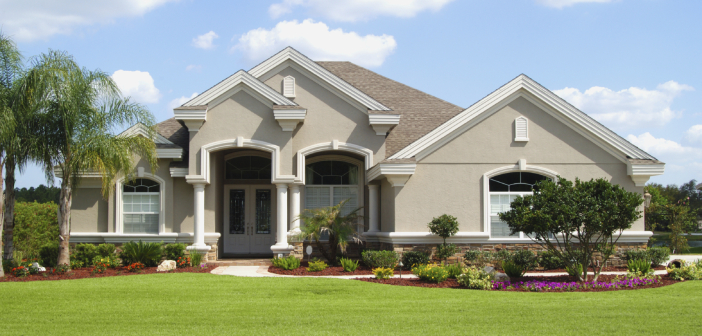Stucco (also known as render) has been used throughout the country as a reliable building material during several periods of history. Culturally and traditionally, it was used on brilliant sculptures and architecture. According to wikipedia.org, stucco was an artistic material for the Egyptian, Minoan, Etruscan, and Roman early empires, and today it is used as an integral part of an attractive wall covering for cement plastering. It consists of varying materials including: a mix of sand, Portland cement, lime, possibly fibers, and water. Here are the pros and cons of stucco as a home building material:
Pros
It is practical and inexpensive.
Stucco has traditionally been a key construction material because it has always been an inexpensive way to achieve stonework-looking texture. According to www.nps.gov (National Park Service)” A stucco coating over a less finished and less costly substrate such as rubblestone, fieldstone, brick, log or wood frame, gave the building the appearance of being a more expensive and important structure.” Not only it is less expensive than materials that provide the same aesthetics, put it is practical.
According to Tusuque Stucco Company, LLC, “Stucco is great at keeping sound transmission of outside noise, outside of the house. Whether used on the interior or exterior, it is also great at keeping the elements of wind, rain, and some degree of fire protection also outside of the house. This adds an extra layer of protection to the home.”
It is easy to apply.
Another great quality about stucco besides its inexpensive cost relative to its quality is that it is easy to apply and durable. Modern stucco can be finished in just three layers. The first layer with plastic cement and sand is called a “scratch out.” It is designed to scratch and add patterns before it dries. The second layer of sand, cement, and lime mixture, the “brown coat,” is then added and allowed to dry for 7-10 days and sprayed with moisture in dry weather to keep from cracking. The “final coat” may be colored sand or acrylic, but it provides the finished look.
Cons
It has a limited tolerance for moisture.
While it can help to keep the occasional rain out, the shifting of the house and constant wet ground will begin to crack the layers of stucco. This is most common when water infiltrates through doors, roofs, or windows, and begins to settle. The condensation and humidity of the vapor can cause the wood or metal in the wall under the stucco to begin to rot or rust. These actions make stucco lose its bond to the materials, and if the affected area is large enough, it all might have to be replaced, not just repaired.
Stucco is not flexible.
Those who live in popular earthquake areas will notice that sometimes stucco can be brittle, so it will not flex with the house when put under distress or pressure. In order to keep this house or any poorly done stucco house from cracking, there has to be a certain level of extra maintenance. For example, a time consuming whitewash treatment. The whitewash has lime that fills small cracks before they spread or deepen. To sustain this protection and stability, the treatment has to be performed on the entire house annually.
Stucco is an easy to maintain and long-lasting material to use on either the interior or exterior of a home. If you choose to use it in a new building or with renovations, the best way to protect the integrity of the materials is to preform systematic tests on the stucco and repair it before it becomes a bigger problem.




